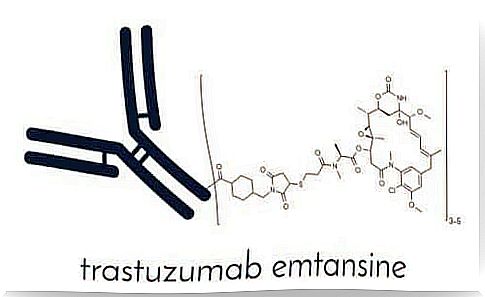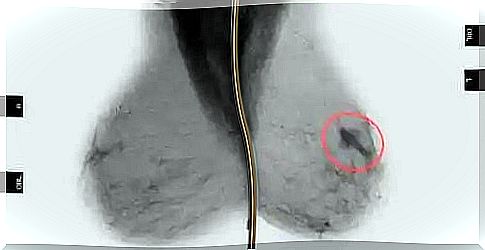HER2 Breast Cancer: Treatment With Trastuzumab

Trastuzumab treatment is used in patients with HER2-positive breast cancer. An oncogene is a gene that has a high capacity for mutation or transformation, which induces the formation of cancer in tissues.
HER2-positive breast cancer refers to a type of neoplasm that has overexpressed receptors for this protein. HER2 proteins are receptors for breast cells produced by the HER2 gene, which are needed in normal situations. These proteins allow the division and repair of breast cells.
HER2-positive breast cancers account for 20-30% of human breast tumors. Experts have associated this type of cancer with a poor prognosis, including reduced recurrence-free survival.
Mechanism of action: What effect does Trastuzumab treatment have on the body?

This medicine is a humanized monoclonal antibody. In other words, it is a drug made up of an antibody produced by a single type of immune system cell: B lymphocytes. We say that it is humanized because it is a combination of a human antibody with a small proportion of monoclonal antibody from a mouse. or rat. The animal portion of the antibody binds to the target antigen. At the same time, the human part decreases the probability that the body’s immune system will destroy it.
In this regard, Trastuzumab acts on the HER2 receptor of breast cells by preventing the proliferation of cells that overexpress this receptor. Eventually, it causes the death of these cells. At the same time, it triggers a controlled immune response against cells that overexpress the HER2 receptor.
Therapeutic indications for treatment with Trastuzumab
Trastuzumab, as we already know, is indicated in the treatment of metastatic breast cancer, whose tumors overexpress HER2 receptors. There are two ways to administer it.
First of all, monotherapy can be used. Doctors choose this regimen for patients who have already received at least two sessions of chemotherapy for metastatic disease.
Previous chemotherapy must have included at least one anthracycline and one taxane, which are other anticancer drugs. To administer Trastuzumab as monotherapy, hormone therapy must have failed. Hormone therapy may also not be recommended due to the patient’s medical condition.
Trastuzumab can be given in parallel with a taxane, such as paclitaxel. Doctors opt for this option when patients have not previously received chemotherapy.
Adverse reactions to Trastuzumab

Like all medicines on the market, Trastuzumab is not immune to a number of side effects. Side effects are all those unwanted and unintended events that we can expect when we follow a drug treatment.
The most commonly reported adverse reactions during clinical trials were infusion-related symptoms: eg, fever and chills after the first dose. In addition, approximately 10% of patients had:
Conclusion
Trastuzumab has made an extremely important contribution to the treatment options available for metastatic breast cancer. This drug offers a significant advantage in metastatic disease, especially in HER2-positive patients receiving concomitant treatment with paclitaxel.
Despite this progress, it is essential that research continues. The studies aim to evaluate the combination of drugs with chemotherapy, as well as improve the detection of HER2 proteins. A more specific detection would bring the advantage of proposing a more effective treatment for patients who really need it.









